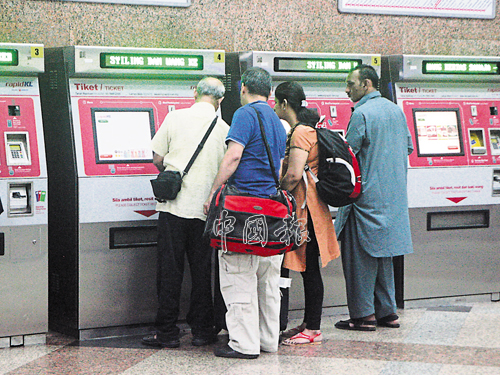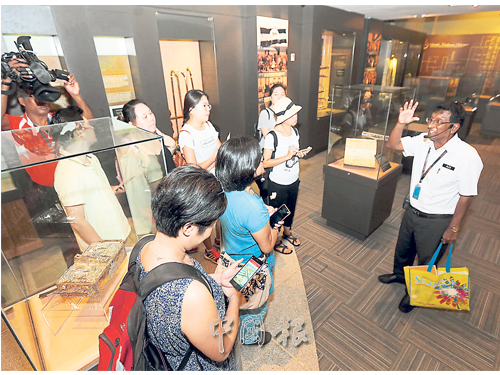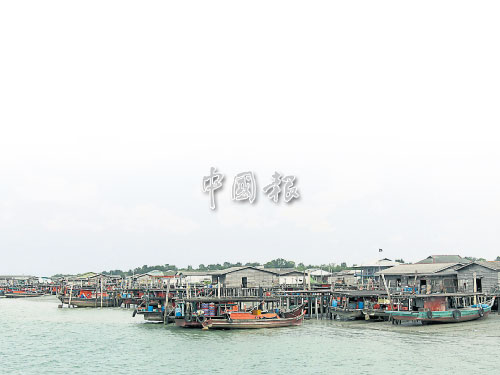Get ready for a wet, wet new year
Downpours and intermittent showers around the country are expected to persist until the end of the year causing floods especially in the east coast states.
The Meteorological Department issued a heavy rain warning for Pahang, Terengganu and Kelantan with Maran, Bera, Rompin, Pekan, Kuantan and Jerantut in Pahang, and Terengganu likely to experience moderate intermittent showers until Wednesday during the mid north-east monsoon season.
“The heavy rain warning (Orange Stage) issued at 10.15pm on Dec 25 is still valid,” it said in a Facebook posting yesterday.
It said Kuala Lumpur, Selangor and Putrajaya were set to experience isolated rain until the new year mostly in the afternoon and evening.
Terengganu was on high alert between Dec 13 and Dec 22 following an earlier forecast of heavy rains and high tides of up to 3.5m in Kemaman.
The first wave of floods in several states in the peninsula had receded, but the wet weather due to the North-East monsoon will persist for those living in the east coast.
Early this year, authorities were pre-occupied with the big clean-up following the big floods that swamped many states, especially in the east coast.
Torrential rain which lasted for days caused several main rivers such as Sungai Galas, Sungai Lebir, Sungai Nenggiri and Sungai Kelantan to burst their banks, submerging almost all of the state’s districts.
Statistics from the Kelantan National Security Council showed that over 170,000 families were relocated to 170 relief centres at the height of the floods.
Kuala Krai was among the worst hit districts with 16,734 families reportedly affected.
This year, the authorities are already on standby while flood simulation exercises have been carried out with the Fire and Rescue Department as part of preparation to face the rainy season.
Science, Technology and Innovation Minister Datuk Seri Madius Tangau had said Kelantan, Terengganu, Pahang and eastern Johor were expected to get more than 500mm of rainfall this month.
Heavy rain is expected over Kelantan beginning yesterday until Wednesday.
Johor and Sarawak (Kuching, Samarahan, Serian, Sri Aman, Betong, Sarikei, Sibu, Mukah and Bintulu divisions) can also expect heavy downpours from Wednesday until Friday.
Updates on the weather conditions are available on MetMalaysia’s website at www.met.gov.my, myCuaca mobile application, Facebook malaysiamet, Twitter @malaysianmet or MetMalaysia Hotline 1-300-22-1638.
~News courtesy of The Star~
Downpours and intermittent showers around the country are expected to persist until the end of the year causing floods especially in the east coast states.
The Meteorological Department issued a heavy rain warning for Pahang, Terengganu and Kelantan with Maran, Bera, Rompin, Pekan, Kuantan and Jerantut in Pahang, and Terengganu likely to experience moderate intermittent showers until Wednesday during the mid north-east monsoon season.
“The heavy rain warning (Orange Stage) issued at 10.15pm on Dec 25 is still valid,” it said in a Facebook posting yesterday.
It said Kuala Lumpur, Selangor and Putrajaya were set to experience isolated rain until the new year mostly in the afternoon and evening.
Terengganu was on high alert between Dec 13 and Dec 22 following an earlier forecast of heavy rains and high tides of up to 3.5m in Kemaman.
The first wave of floods in several states in the peninsula had receded, but the wet weather due to the North-East monsoon will persist for those living in the east coast.
Early this year, authorities were pre-occupied with the big clean-up following the big floods that swamped many states, especially in the east coast.
Torrential rain which lasted for days caused several main rivers such as Sungai Galas, Sungai Lebir, Sungai Nenggiri and Sungai Kelantan to burst their banks, submerging almost all of the state’s districts.
Statistics from the Kelantan National Security Council showed that over 170,000 families were relocated to 170 relief centres at the height of the floods.
Kuala Krai was among the worst hit districts with 16,734 families reportedly affected.
This year, the authorities are already on standby while flood simulation exercises have been carried out with the Fire and Rescue Department as part of preparation to face the rainy season.
Science, Technology and Innovation Minister Datuk Seri Madius Tangau had said Kelantan, Terengganu, Pahang and eastern Johor were expected to get more than 500mm of rainfall this month.
Heavy rain is expected over Kelantan beginning yesterday until Wednesday.
Johor and Sarawak (Kuching, Samarahan, Serian, Sri Aman, Betong, Sarikei, Sibu, Mukah and Bintulu divisions) can also expect heavy downpours from Wednesday until Friday.
Updates on the weather conditions are available on MetMalaysia’s website at www.met.gov.my, myCuaca mobile application, Facebook malaysiamet, Twitter @malaysianmet or MetMalaysia Hotline 1-300-22-1638.
~News courtesy of The Star~



















